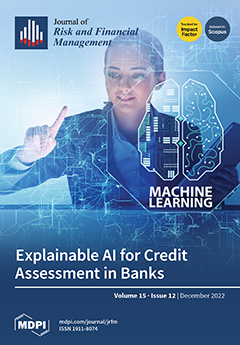Open AccessArticle
The Role of E-Accounting Adoption on Business Performance: The Moderating Role of COVID-19
by
Abdalwali Lutfi, Saleh Nafeth Alkelani, Hamza Alqudah, Ahmad Farhan Alshira’h, Malek Hamed Alshirah, Mohammed Amin Almaiah, Adi Alsyouf, Mahmaod Alrawad, Abdelhameed Montash and Osama Abdelmaksoud
Cited by 40 | Viewed by 5716
Abstract
In the last decade, information systems (ISs) have made dynamic developments in light of their ability to enhance the performances of businesses. In relation to this, an organization that is effectively and efficiently managed often displays optimum performance using financial systems such as
[...] Read more.
In the last decade, information systems (ISs) have made dynamic developments in light of their ability to enhance the performances of businesses. In relation to this, an organization that is effectively and efficiently managed often displays optimum performance using financial systems such as electronic accounting (e-accounting). Thus, essentially, e-accounting is utilized for the automation of operational processes and for improving business efficiency and performance. More currently, e-accounting dynamic development has laid credence to the performance of businesses in a way that the influence cannot be exaggerated. Nevertheless, past studies evidenced that successful e-accounting depends on critical success factors, and hence this study primarily aims to conduct an evaluation of e-accounting using DeLone and McLean’s information system model (DM ISM) among firms in Jordan. More specifically, this study determines the influence of information quality, system quality, service quality, system usage, and user satisfaction on business performance. The current study adopted a quantitative method, applying a self-administered survey questionnaire for the purpose of data collection from 104 e-accounting users. This study employed partial least squares structural equation modeling (PLS-SEM) to validate the data, and based on the findings, system quality and information quality affect system use; service quality of e-accounting had no significant impact on use, but e-accounting use had a significant influence on the satisfaction of users. Moreover, e-accounting system use and user satisfaction positively influence business performance. This study is an extension of the current IS literature, particularly of those focused on determining the effects of e-accounting benefits. This study validated the proposed model in the context of Jordanian firms and contributes to both the literature on and practice of e-accounting. This study provided implications, limitations, and recommendations for future research.
Full article
►▼
Show Figures




